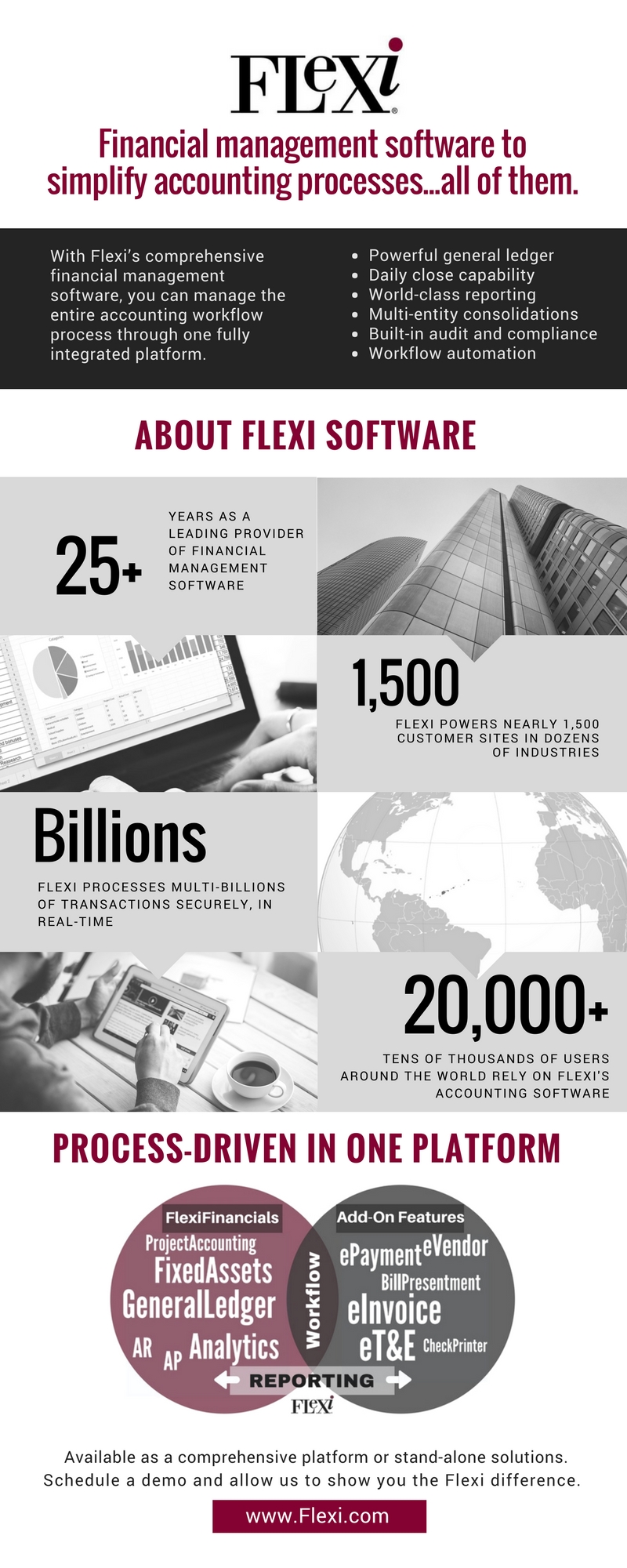Period-end closing may be enough to grumble about as it is. According to the Adra Match Market Survey in 2013, 61% of accounting professionals are unhappy with their financial close processes. But, closing the books can be made even more complicated when your business encompasses multiple entities, geographies, and systems.
Entities
When your business has multiple entities, your period-end close requires consolidation. Consolidation can be frustrating and time-consuming, unless you’re using software that automates the process. Flexi’s Multiple Entity Financial Management provides automated consolidations and enterprise-wide insight, making your close more efficient and more easily managed.
Geographies
If your entities operate in various geographies, this can also complicate your close. Various states have different sales tax rates, and if your business is international, you’re working in a variety of currencies as well. Fortunately, Flexi’s Multiple Entity Financial Management easily manages various currencies to save you time and keep your data accurate.
Systems
When you are compiling data from a variety of sources, it’s easy to make manual errors when formatting the inconsistent data you’re gathering. To close, you need good systems that communicate well together, and error-prone technology like Microsoft Excel doesn’t cut it when you need timely, accurate data. Using cloud-based consolidation software like Flexi can help ensure that everyone in your organization is always accessing the most current, most accurate data.
Best Practices
To ease the burden your entities, geographies, and systems cause on your period-end close, consider investing in software that does the tough work for you.
Reconciliation software can align data from multiple sources, making the various systems you use more easily managed. When data format is inconsistent across systems, it can take a great deal of your staff’s time to reconcile. Let a smartly-designed software solution do that for you.
Additionally, software specific to managing your various entities, like Flexi’s Multiple Entity Financial Management, can help manage various currencies, tax rates, and locations.
Lastly, cloud-based software is a necessity in today’s accounting world for reliable, accurate, current data that is shared organization-wide. Too often departments operate in silos where they collect and analyze their own data in their own systems. By creating a centralized hub for all to access 24/7, data is always current, and all stakeholders always have access to the same numbers.
Flexi can help
Choosing software that helps ease the pain points of caused by your business’s entities, geographies, and systems is one step towards obtaining more manageable period closes. The full suite of Flexi products aims to streamline accounting processes, saving you time closing the books so your ever-busy team can move on to the next big task. Flexi products are cloud-based, non-proprietary, and compatible with Microsoft standards.












